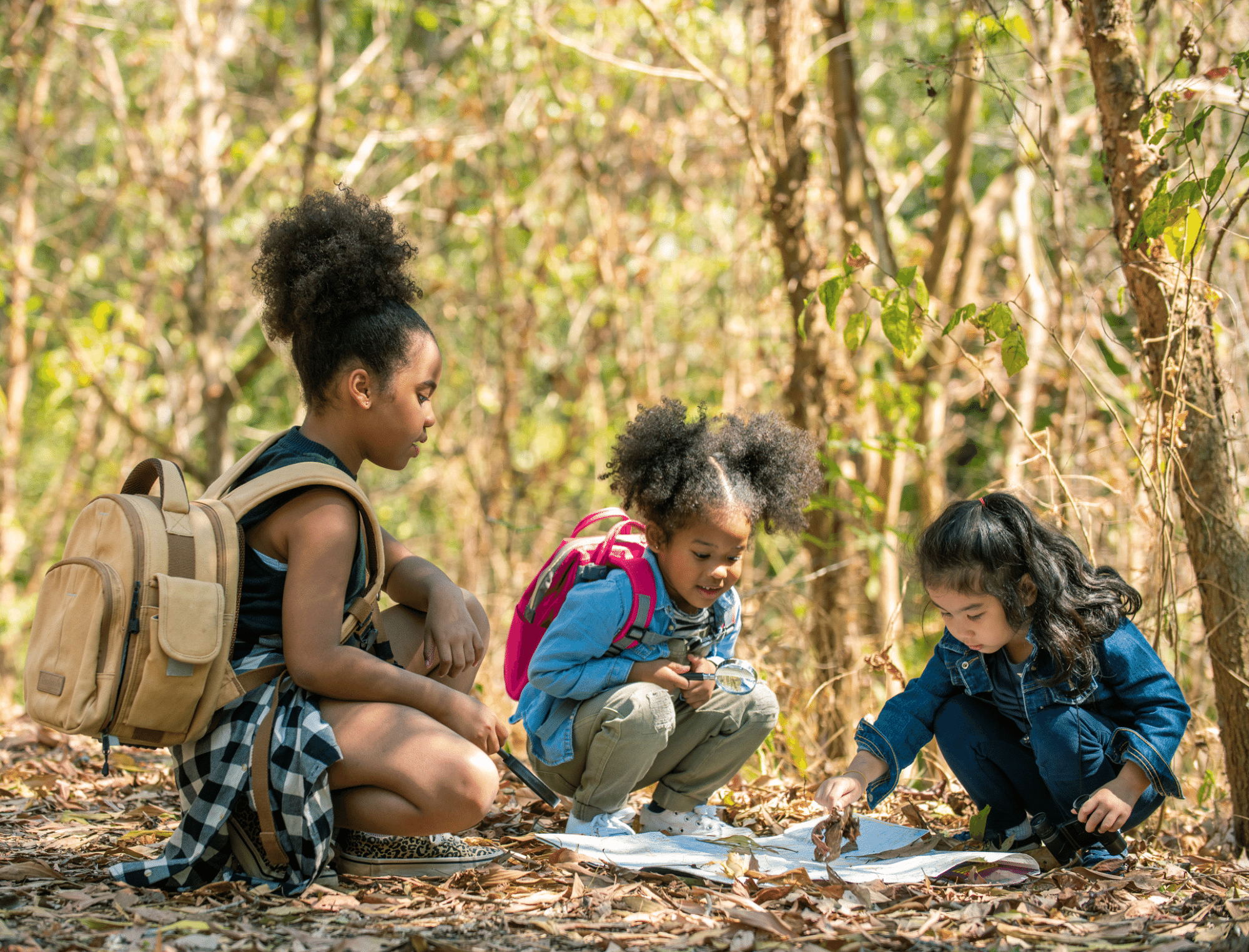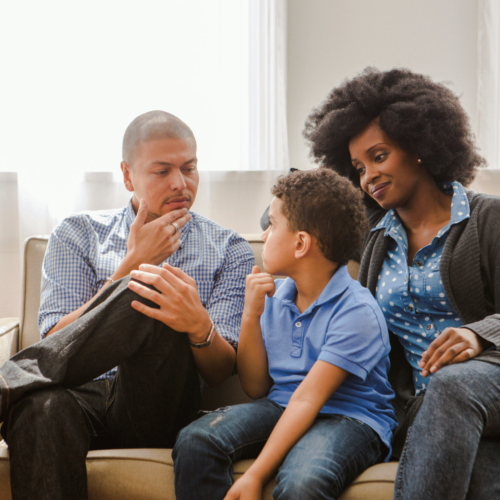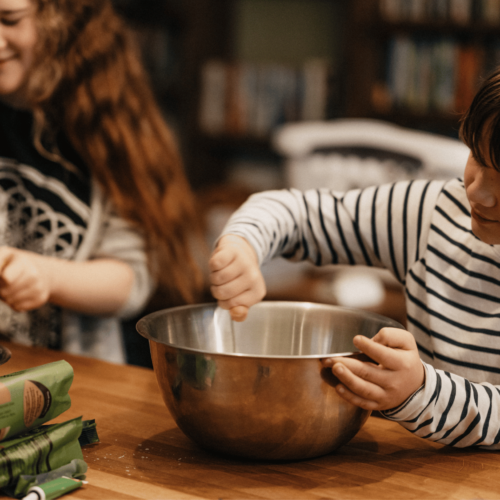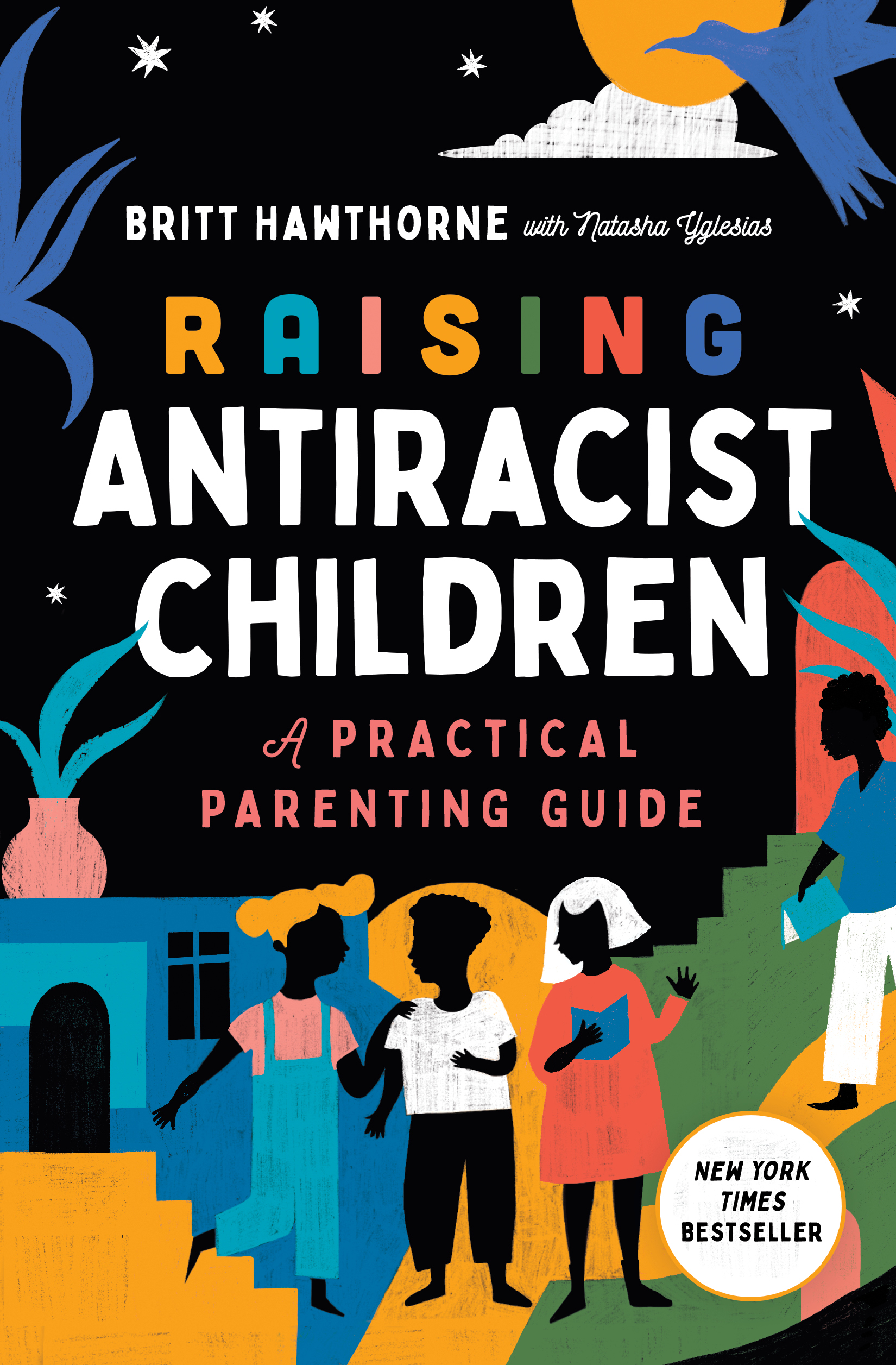If I were to ask you whose Native lands you lived on, would you know? If yes, would you be able to tell me about their history, language, culture, or lives? Most non-Native people don’t think about Indigenous history or land rights on a daily basis. And due to settler colonialism, Indigenous erasure is present in schools leading to unchecked and widespread myths and misconceptions.
Land acknowledgments are an opportunity to show respect to Indigenous peoples and raise awareness that will challenge settler-colonialism history and its present-day impacts. This is done by acknowledging the Indigenous history and contemporary Native people—and by making a mindful effort to learn about, support, and center the lives of Indigenous peoples that you share a community with.
Educators and parents have a responsibility to center the lives of Indigenous peoples as we bring up our children. Learning how to do a land acknowledgment can be a helpful tool to do so. Keep reading to learn how to do a land acknowledgment in the classroom and at home.
What Is a Land Acknowledgment?
A land acknowledgment (or territory acknowledgment) is the practice of acknowledging the Indigenous history and present-day rights of the land that you use. The acknowledgment can be done before reciting the pledge of allegiance, creating a classroom environment, or even at home with family.
If done well, a land acknowledgment can be the first step towards combating Indigenous erasure, the individual and systemic removal of Indigenous and Native history, language, culture, medicine, worldview, and existence from contemporary teachings and education.
Land acknowledgments should not be a one-and-done kind of statement that can be easily checked off a to-do list.
Without effective research, commitment to lifelong learning and unlearning, and action, land acknowledgments can become empty promises that succeed in only comforting non-Native people and upholding the status quo.
Should You Do a Land Acknowledgment?
Oftentimes, educators will ask if doing land acknowledgments have become too performative and if we should skip them altogether. Some critics of land acknowledgments believe that universities, conferences, and events have sucked the life and meaning out of land acknowledgments.
I agree with those critiques and believe businesses, especially for-profit businesses, that are benefiting from stolen and colonized land should be doing more than a public remark.
However, I don’t confuse our homes and classrooms with those spaces. Our learners show up every day to learn, to listen, and to create. Our children are constants in our life—they are not single-ticket purchasers. We have the opportunity to center Indigenous peoples, stories, history, languages, and culture in our classroom every single day.
What to Avoid When Doing a Land Acknowledgment
A performative land acknowledgment makes non-Native people delivering it feel “better” without offering any support to the Indigenous peoples it is supposed to be for. You should avoid taking any shortcuts while doing this activity.
Instead, the acknowledgment should be transformative, compelling people to action. It should invite discomfort, and help people question the relationship—or lack thereof—that they have with Indigenous nations and the land. It should help people take steps to develop relationships with the Tribal Nations and with the land.
It should help connect people to resources to learn more about structural colonialism and the impacts it has in the modern-day, and make them think critically about the effects of colonization..
How To Do a Land Acknowledgment With Your Kids
1. Research
The first step to doing a land acknowledgment with your kid (ages 6+) is to look into the history of the land you’re inhabiting and the history of the original caretakers, Indigenous and native peoples who originally lived there.
There are several websites you can use to look up the territories, languages, and treaties of the land’s history and the Indigenous peoples’ histories. Native Land’s interactive map is a great resource that provides information to help you and your child unpack your land’s history of colonialism and forced removal.
2. Write Your Acknowledgment
As you learn about the people who live there, both past and present, research the tribes, languages, cultures, and histories. Together, you can write up an acknowledgment that includes this newfound knowledge.
As your family begins their journey, use these markers to keep the conversation going:
- Start with one phrase: “This is the Winnebago’s land. The Winnebago people care for this land and so do I.”
- Next, add pieces of your learning to your land acknowledgment: “I honor the Mashpee Wampanoag Tribe as the traditional caretakers of this land. They are also known as the People of the First Light and have inhabited present-day Massachusetts and Eastern Rhode Island for more than 12,000 years.”
- Together with your elementary-age children, you can write a similar paragraph:
“Our house sits on the ancestral homeland and territory of xučyun (Huichin), the land of the Chochenyo speaking Ohlone tribe. The Muwekma Ohlone Tribe’s present-day membership consists of surviving American Indian lineages aboriginal to the San Francisco Bay region with ancestry through the Missions Dolores, Santa Clara, and San Jose. It also consists of members of the Federally Recognized Verona Band of Alameda County. It’s our responsibility as anti-racists to communicate and share knowledge about these Native and Indigenous peoples and our city’s history with them.” written by Natasha Yglesias
3. Connect
After researching, make an event of going out into the land with your child and truly connecting with it. Take a silent walk in a local park or canyon, sketch local flora and fauna together, or anything that helps your children to connect and honor the land. Make notes of the land and water forms. Make notes of any native or indigenous names.
4. Acknowledge and Reach Out
It’s important to point children to honoring and acknowledging the contemporary existence of their local Indigenous communities, as well. While many tribes have been wiped out, there are over 500 federally recognized tribes that are still here.
Because of colonization, forced resettlement, and separation of families, Indigenous folks experienced an erasure of their culture, language, traditions, and an interruption in their parenting patterns, so in addition to honoring and acknowledging that past, we should celebrate local Indigenous tribes.
This is where action can come into play. You and your family can begin to build authentic relationships with Indigenous communities. A first step would be to reach out to see what you can do for your local Indigenous communities.
Another action step your family can take is to compensate and donate to Indigenous peoples. Instead of going hard on grocery shopping on Thanksgiving or having a spending spree during Black Friday, why not make annual donations and create volunteer traditions with your family?
How To Do a Land Acknowledgment In The Classroom
While a land acknowledgment in the classroom should look similar to the one done at home, there are a few extra steps educators should take.
Educators should first ask themselves the following questions. The questions below are possible starting points to support Indigenous culture and amplify contemporary Native Americans. As always, this is not an exhaustive list, but a place to start.
- Are Indigenous and Native American maps taught, displayed, and available for your learners?
- Does your classroom understand the difference between cultural appropriation and cultural appreciation?
- Past or present, has Indigenous and Native American cultural appropriation happened in your classroom?
- Are your Indigenous and Native American instructions only focused on researching the past?
- Is your teaching practice showing and amplifying contemporary Native Americans and Indians today?
- Do you have books written by Native Americans, First Nations, Native Hawaiians, Inuit and Alaska Natives, and Indigenous authors?
- Have you reached out to your local Indigenous/Native American community to see how you can connect and support them?
Depending on the age of your students, you can teach different actionable steps to accompany the land acknowledgment.
- Young Children can learn to memorize the Native names of past and contemporary Tribal nations, the names of plants and animals, and also greetings
- Elementary-age children can build upon the above knowledge and share how they are paying respect to contemporary Indigenous communities
- Middle school and high school students can read Indigenous People’s History of the United States, a book that is under threat of being banned in certain schools across the country. The book helps learners learn history from the Native point of view
Further Your Own Education
As an educator or parent, it’s up to you to continue learning about Indigenous history and culture to help your students or children center it in their lives and education.
A great place to start is to read books written by Native authors. To find books, explore the American Indians in Children’s Literature (AICL) list of the best books by or about American Indians. Or check out this list of kid books by Indigenous authors. When purchasing, opt for an Indigenous-owned bookstore like Birchbark Books.
You can access free Illuminatives artwork and lesson plans to amplify the voices of contemporary native peoples in your classroom. You can also learn and connect with Indigenous educators.
Make Acknowledgments an Ongoing Tradition
After sharing your land acknowledgment, we must teach our children that action occurs after— otherwise, the land acknowledgment is performative. It’s essential to know the history that’s brought your family to the land you currently inhabit, and it’s important to understand your place within that history.
Land acknowledgments don’t just exist as a one-time event to acknowledge past genocide or forced removal: colonialism and white domination are ongoing and ever-present. These acknowledgments aren’t just about the past but about the contemporary, too.
Our children should build awareness of their participation in its perpetuation, and they can do so by doing land acknowledgments more than once. By acknowledging the land and its history multiple times, you will help craft mindfulness and awareness for yourself and your child. Be sure to educate others and acknowledge the land around them, as well. The goal should always be to inspire collective action.





